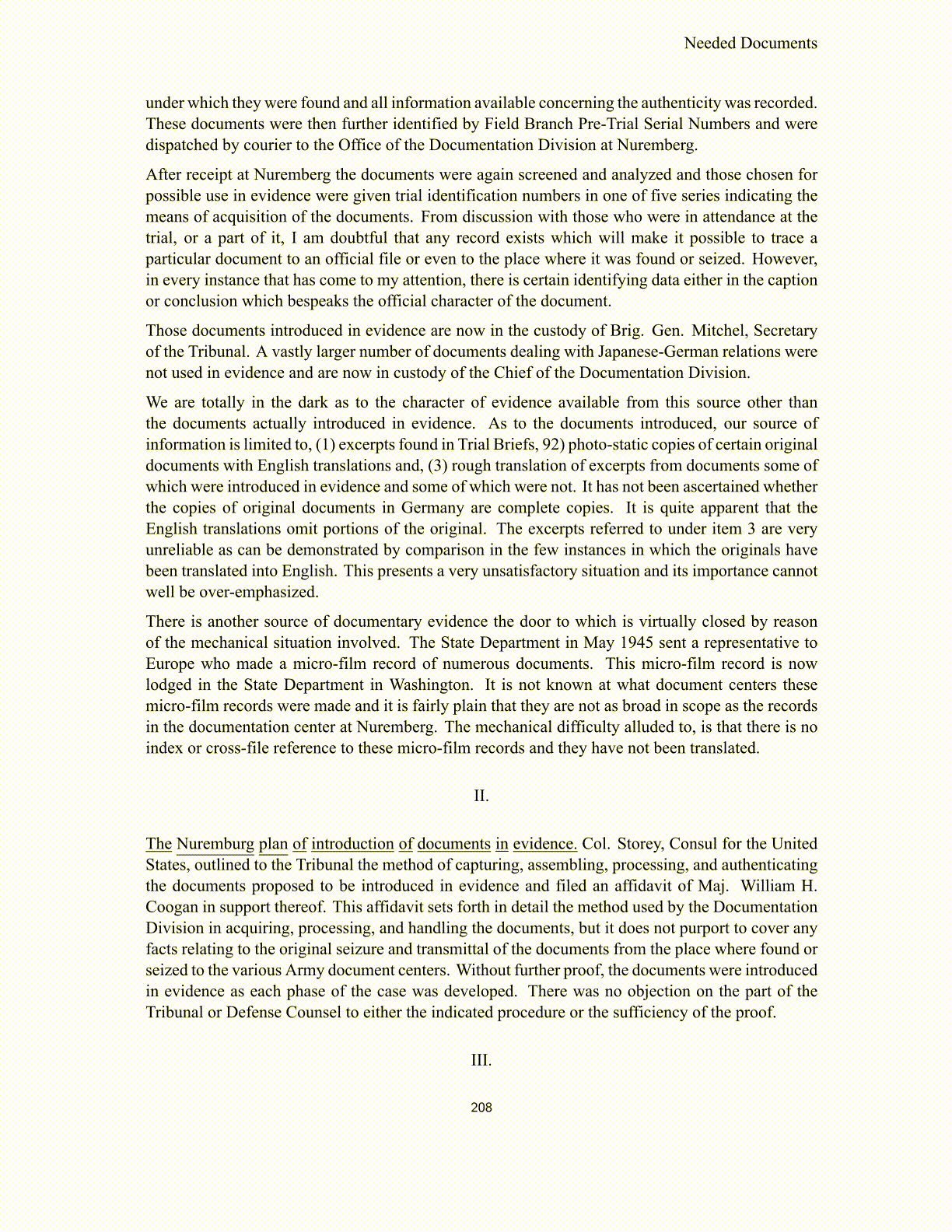
Needed Documents under which they were found and all information available concerning the authenticity was recorded. These documents were then further identified by Field Branch Pre-Trial Serial Numbers and were dispatched by courier to the Office of the Documentation Division at Nuremberg. After receipt at Nuremberg the documents were again screened and analyzed and those chosen for possible use in evidence were given trial identification numbers in one of five series indicating the means of acquisition of the documents. From discussion with those who were in attendance at the trial, or a part of it, I am doubtful that any record exists which will make it possible to trace a particular document to an official file or even to the place where it was found or seized. However, in every instance that has come to my attention, there is certain identifying data either in the caption or conclusion which bespeaks the official character of the document. Those documents introduced in evidence are now in the custody of Brig. Gen. Mitchel, Secretary of the Tribunal. A vastly larger number of documents dealing with Japanese-German relations were not used in evidence and are now in custody of the Chief of the Documentation Division. We are totally in the dark as to the character of evidence available from this source other than the documents actually introduced in evidence. As to the documents introduced, our source of information is limited to, (1) excerpts found in Trial Briefs, 92) photo-static copies of certain original documents with English translations and, (3) rough translation of excerpts from documents some of which were introduced in evidence and some of which were not. It has not been ascertained whether the copies of original documents in Germany are complete copies. It is quite apparent that the English translations omit portions of the original. The excerpts referred to under item 3 are very unreliable as can be demonstrated by comparison in the few instances in which the originals have been translated into English. This presents a very unsatisfactory situation and its importance cannot well be over-emphasized. There is another source of documentary evidence the door to which is virtually closed by reason of the mechanical situation involved. The State Department in May 1945 sent a representative to Europe who made a micro-film record of numerous documents. This micro-film record is now lodged in the State Department in Washington. It is not known at what document centers these micro-film records were made and it is fairly plain that they are not as broad in scope as the records in the documentation center at Nuremberg. The mechanical difficulty alluded to, is that there is no index or cross-file reference to these micro-film records and they have not been translated. II. The Nuremburg plan of introduction of documents in evidence. Col. Storey, Consul for the United States, outlined to the Tribunal the method of capturing, assembling, processing, and authenticating the documents proposed to be introduced in evidence and filed an affidavit of Maj. William H. Coogan in support thereof. This affidavit sets forth in detail the method used by the Documentation Division in acquiring, processing, and handling the documents, but it does not purport to cover any facts relating to the original seizure and transmittal of the documents from the place where found or seized to the various Army document centers. Without further proof, the documents were introduced in evidence as each phase of the case was developed. There was no objection on the part of the Tribunal or Defense Counsel to either the indicated procedure or the sufficiency of the proof. III. 208